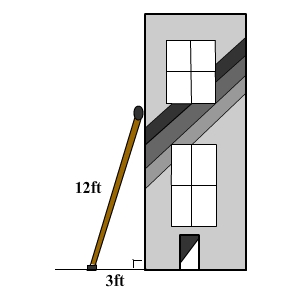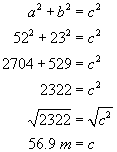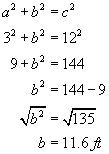Right Triangles and the Pythagorean Theorem
A right triangle has one angle that is 90° (a right angle); that is, the two sides that meet at the right angle are perpendicular. The two other (acute) angles in the right triangle add up to 90°.
![]() Pythagorean Theorem
Pythagorean Theorem
In any right triangle, the square of the length of the hypotenuse (the side opposite the right angle) is equal to the sum of the squares of the lengths of the other two sides.
a2 + b2 = c2
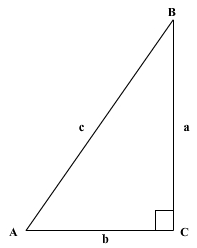
Practical Examples
The Pythagorean Theorem is very helpful to solve practical physical problems. Study the following examples carefully to help you apply the Pythagorean Theorem. Notice when we take the square root we only use the positive root. This is because lengths are always positive.
A baseball diamond is actually a square with 90 feet between home and first, first and second, second and third, and fourth and home. What is the shortest distance between first and third base to the nearest tenth of a foot?
|
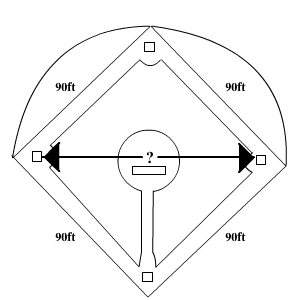
To avoid a pond, Shelly walks directly west 52 meters and then directly north 23 meters. How far would she have had to walk had she been able to cross the pond directly?
|
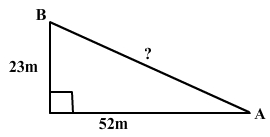
How far up the wall will a 12-foot ladder reach if the recommended distance from the base of the wall is 3 feet?
|
